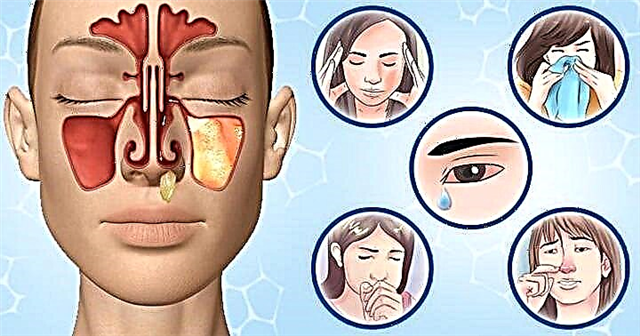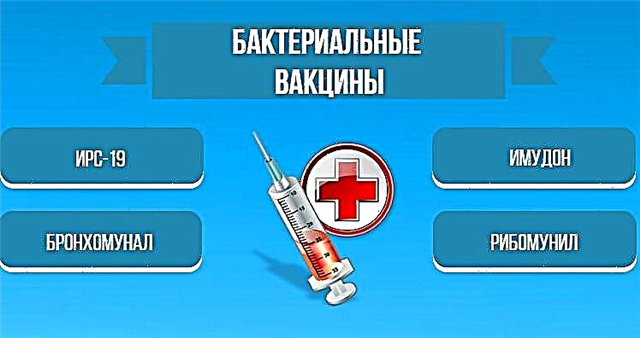The only reason pus comes out of a child's ear is an inflammation of the middle ear. At the same time, otitis media in children is extremely rarely an independent disease. More often, ear inflammation complicates acute respiratory diseases or other pathology of the ENT organs, as well as childhood infectious diseases, measles, scarlet fever.

A predisposing factor in the development of this pathological condition is enlarged adenoids in a child. Compressing the Eustachian tube from the outside, these formations contribute to the retention of mucus in it and throw it along with pathogenic microorganisms from the nasopharynx into the middle ear cavity. This is how catarrhal inflammation of the middle ear develops. However, the disease is characterized by the fact that, due to the protective mechanisms of the treatment, regression of the disease can be noted at any stage.
In the case of the presence of predisposing factors, the activity of pathogens, or the ineffectiveness of the treatment, catarrhal otitis media is transformed into a purulent form, the most typical symptom of which is pus in the child's ear.
Additional signs
Suppuration is a free flow of a viscous, sticky yellowish exudate from the external auditory canal. This process is characterized by other changes in the clinical picture of the disease. The presence of ear inflammation in any of its parts occurs with severe pain syndrome. Depending on the severity of the process and its prevalence, pain sensations can vary from discomfort in the ear and discomfort to bursting, pressing pain, as a result of which the child may rush in bed or scream.
Ear congestion and hearing loss are also common. In most cases, the development of otitis media is accompanied by an increase in temperature to 38-39 degrees.
The situation when pus appears in the ears of a child is characterized by an improvement in the general condition. There is a decrease in pain syndrome, a decrease in body temperature.
The mechanism of development of suppuration
The presence of pus in the lumen of the external auditory canal becomes possible due to perforation of the tympanic membrane.
The transformation of catarrhal otitis media into purulent is accompanied by the formation of a viscous exudate in the cavity middle ear. This content, putting pressure on the walls of the tympanic cavity, leads to rupture of the tympanic membrane, as a result of which pus from the middle ear rushes into the external auditory canal, and the pressure on the walls of the middle ear decreases.
middle ear. This content, putting pressure on the walls of the tympanic cavity, leads to rupture of the tympanic membrane, as a result of which pus from the middle ear rushes into the external auditory canal, and the pressure on the walls of the middle ear decreases.
In some cases, a situation may occur when the eardrum is dense enough, and the child's condition worsens. The phenomena of intoxication are increasing, the pain syndrome is increasing. With this development, surgical manipulation is indicated, aimed at perforating the tympanic membrane, paracentesis.
Due to its painfulness, this procedure is performed in adults under local anesthesia, in children - under general anesthesia.
Paracentesis allows the purulent exudate to be released and prevents the infection from spreading to the inner ear and brain.
If performed correctly by a specialist, this treatment procedure is absolutely safe.
Despite the general improvement in well-being caused by the perforation of the tympanic membrane, this condition requires changes in treatment. Pus from the ear in a child is a confirmation of acute purulent otitis media. Since the presence of a bacterial pathogen in the development of this process becomes obvious, drug therapy should include antibacterial drugs.
Antibiotic therapy
The necessary treatment for acute purulent ear inflammation is antibiotics, both in the form of tablets and ear drops. Among the drugs for oral administration, priority is given to antibiotics from the group of amoxicillin or its compounds with clavulanic acid. Antibiotic-containing ear drops include
- Tsipromed;
- Otofa;
- Normax.
Since otorrhea is a consequence of perforation of the tympanic membrane, the use of ear drops should be agreed with the otolaryngologist. This is an important condition due to the fact that some topical drugs may contain ototoxic components. Using them with an injured eardrum can lead to negative effects on the middle ear bones or even the auditory nerve. Permanent hearing loss can result. Prescribing antibiotics in drops, it is necessary to ensure that they do not include gentamicin, kanamycin, neomycin. The remedies recommended for otitis externa and average, when the tympanic membrane is intact, can be dangerous if it is perforated.
drops, it is necessary to ensure that they do not include gentamicin, kanamycin, neomycin. The remedies recommended for otitis externa and average, when the tympanic membrane is intact, can be dangerous if it is perforated.
Using ear and nasal drops
The drops used for an injured eardrum should not contain ethyl alcohol and a non-steroidal anti-inflammatory component. These constituents can also be harmful to the structures of the middle ear.
Instillation of ear drops is carried out only after the toilet of the external auditory canal and its release from the contents.
Otherwise, the solution may not reach the middle ear and the effectiveness of the treatment will be reduced.
For carrying out the toilet of the ear, it is recommended to use cotton cords. To make the exudate better absorbed, before the procedure, you can moisten them in a 3% hydrogen peroxide solution or physiological saline. It is necessary to change the flagella until the skin of the ear canal becomes dry. For the procedure, do not use ear sticks, hairpins and other sharp objects that can injure the skin of the outer ear. The available purulent discharge will contribute to the rapid infection of the wound surface and the development of otitis externa.
Instillation of ear drops when a child's ear festers is recommended by the injection method. To carry out this procedure, the patient lies down alternately on one side or the other. The pre-warmed drops are instilled into the ear, and then pressing movements are made with the finger on the tragus, contributing to the injection and movement of the drops deep into the ear.
Before using ear drops, otolaryngologists recommend instilling vasoconstrictor nasal drops. They are the first aid for the appearance of symptoms of otitis media, helping to relieve edema and improve the patency of the auditory tube. If the child has pus leaking from the ear, it is recommended to continue the nasal drops.
The duration of taking vasoconstrictor nasal drops should not exceed 7 days, since they can cause side effects, including addiction.
The most popular nasal drops used in children are
 Naphthyzin;
Naphthyzin;- Galazolin;
- Tizine;
- Sanorin.
In the presence of suppuration, the use of thermal procedures is categorically contraindicated.
Otherwise, there is a possibility of further spread of the infection to the area of the mastoid process of the temporal bone or the lining of the brain. Any physiotherapy procedures are contraindicated in children under 5 years of age.
The duration of treatment for acute purulent otitis media is 7-10 days.
All this time, the patient must be under the supervision of an otolaryngologist. After a period of suppuration, the stage of reparation begins, in which therapeutic measures should be aimed at restoring the injured tympanic membrane. As for the duration of taking antibiotics, the course of treatment should be at least 7 days.Premature termination of admission is dangerous due to the possibility of development of stable microflora and the transition of the disease into a chronic form.
Timely consultation with a specialist, following all the doctor's instructions can quickly improve the child's condition, restore hearing and prevent the development of complications.

 Naphthyzin;
Naphthyzin;

